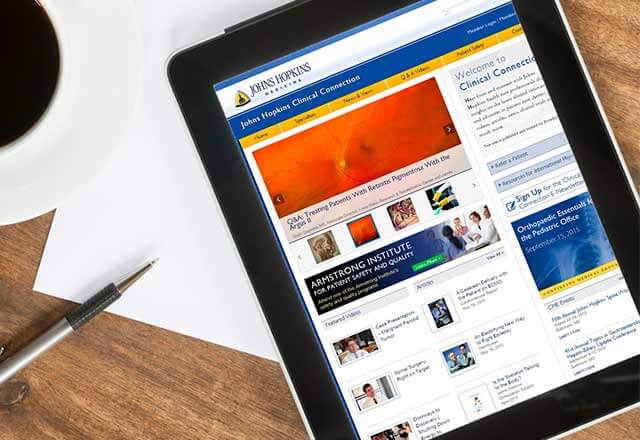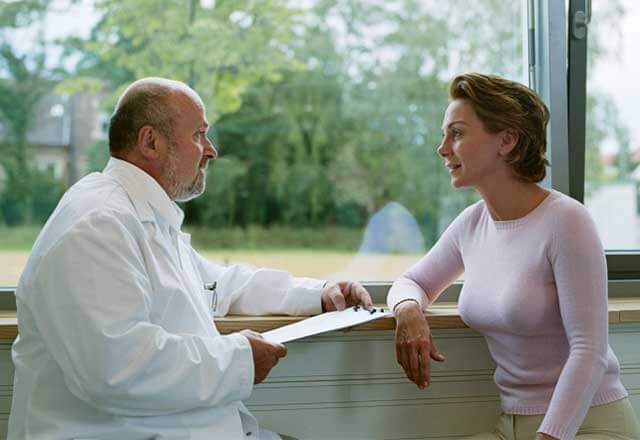-
About
- Health
-
Patient Care
I Want To...
-
Research
I Want To...
Find Research Faculty
Enter the last name, specialty or keyword for your search below.
-
School of Medicine
I Want to...
For and about members of the Office of Johns Hopkins Physicians
Telemedicine Increases Access, Adds Value
See more in:
Telemedicine Increases Access, Adds Value

Ophthalmologist Ingrid Zimmer-Galler, right, demonstrates a remote eye exam conducted by certified nursing assistant Emmoline Zaza.
Karen Blum
Date: 08/24/2017
The Department of Emergency Medicine at The Johns Hopkins Hospital had a problem: In the early hours of the morning when fewer triage personnel were available, as many as 25 percent of patients got tired of waiting and left before being seen.
But telemedicine helped provide a solution, says assistant administrator Gai Cole.
The emergency department (ED) invested in telemedicine equipment at the same time it rotated remote coverage by physicians and other care providers during the most vulnerable time period — between midnight and 3 a.m. Since last April, patients with less emergent needs have been taken by a certified nursing assistant to an exam room containing a telemedicine cart. Using a handheld camera, they can zoom in on wounds and peer into eyes, ears and throats, while a provider, via video conference, interacts with the patient and forms a treatment plan. More than 6,400 patients have been evaluated this way since the program started, says Cole; it’s been so successful that within four months, the walk-out rate plummeted to 4.5 percent.
The service will be expanded to Johns Hopkins Bayview Medical Center and Howard County General Hospital.
It’s just one example of active telemedicine projects occurring across Johns Hopkins Medicine, says Rebecca Canino, administrative director for the recently created Office of Telemedicine.
In other areas, neurologist Nicholas Maragakis uses telemedicine to conduct follow-up appointments with his patients who have ALS; Johns Hopkins pediatric cardiologists provide echocardiography consults to patients at Sibley Memorial Hospital in Washington, D.C.; and patients presenting to Howard County General Hospital’s emergency department with an eye problem can, through telemedicine, be screened by ophthalmologists at the Wilmer Eye Institute rather than be automatically transferred to The Johns Hopkins Hospital’s ED. An additional 24 projects so far are planned for the next year, Canino says, including a video-visit service that will allow patients to meet with several specialty physicians at the same time, which will improve care coordination.
“This is Johns Hopkins patient- and family-centered care in action,” Canino says. Patients can take an invitation to a telemedicine visit and forward it to family members or caretakers; up to four people in different locations can participate in the patient visit. Some projects send patients home with tablets to participate in the visits, while others make use of patients’ smartphones or send nurses to patients’ homes with iPads. In other cases, Canino says, projects can partner with an outlying clinic so a patient can do the telemedicine visit from a physician office closer to their home. The telemedicine office also is looking to incorporate the registration and copayment process within MyChart so patients could check in from home. Like in-person visits, all telemedicine documentation is done through Epic, the electronic medical record.
Telemedicine appointments not only save patients travel, she says, but are more likely to start and end on time. Overall, patients and physicians like the visits, adds ophthalmologist Ingrid Zimmer-Galler, executive clinical director of the Office of Telemedicine: “We use the internet to order our coffee, say hello to friends and hold meetings, so why not see your physician online, too?"






